 Carbon Arrow Mass, Speed & Kinetic Energy, Research Guide | Chapter 5
Carbon Arrow Mass, Speed & Kinetic Energy, Research Guide | Chapter 5The Arrow is -stabilized launched through, and usually consist of long, straight, rigid axle with what is called, and weighty (and usually sharp and pointy) attached to the front end, and a slot at the back is called to engage. The use of bows and arrows by humans precedes and is common to most. A craftsman who made darts is, and one that makes the arrowhead is Arrowsmith.
The oldest evidence of stone tipped projectiles, which may or may not have been encouraged by the arc (c.f.), dating to c. 64,000 years ago, was found in, today. The oldest evidence of the use of a bow to shoot arrows dated to about 10,000 years ago; based on the arrowheads found in the north. They have a shallow groove in the base, which shows that they were shot from a bow. The oldest arc so far recovered is about 8,000 years old, was found in a swamp in Denmark. Archery seems to have arrived in the United States with approximately 4,500 years ago.
Arrow size varies greatly across cultures, ranging from eighteen inches to six feet (45 cm to 150 cm). However, most modern arrows 75 cm (30 in) to 96 cm (38 in); the arrows of war of the 76 cm (30 in). a very short arrows have been used, both shot through the guide attached to the bow (an "overdraw") or wrist archer (Turkey "siper"). It may fly farther than the heavier arrows, and the enemy without suitable equipment may find himself unable to return them.
axis is the major structural elements of the arrow, which other components are attached. traditional arrow shafts are made of strong, light, or, while modern shaft may be made from ,, or a combination of materials. such shafts are usually made of a core wrapped with an a. Traditional premium materials.
shaft known as its spine, referring to how little bend shaft when compressed, then the arrows bend less is said to have more spine. In order to strike a consistent basis, a group of children must spined arrow will be the same. "Center-shot" arc, where the arrow passes the bow riser central vertical axis, can obtain consistent results with different arrows thorns. However, most of the traditional bow and arrow-shot center has to bend around the handle in; The arc is likely to provide the most consistent results with a narrower range of arrow spine that allows the right arrow to deflect around the bow. Bows with higher draw weight will generally require stiffer arrows, with more spine (less flexibility) to provide the correct amount of flex when shot.
Heavy arrow shaft can be expressed in GPI (per). The length of the shaft multiplied by the GPI rankings give more weight in the shaft. For example, shaft 30 inches (760 mm) long and has a 9.5 GPI weight of 285 grains (18). It does not include other elements of the arrow is completed, so that the full arrows will be heavier than the shaft alone.
Sometimes the shaft will be made of two types of wood tied together, so that what is known as an arrow foot. Known by some as the best of wooden arrows, arrow leg used both by people and early European. arrow leg will typically consist of a short length near the head of the arrow, with the remainder consisting of a shaft. By strengthening the areas most likely to break, the arrow is more likely to survive the impact, while maintaining overall flexibility and lighter weight.
A barreled arrow shaft is one which tapers in diameter bi-directionally. This allows for optimal weight arrows that have yet flexible enough strength to fight. A Qing dynasty archery arrow shafts inspected by an enthusiastic Peter Dekker and found to exhibit the following qualities:
The balance-of-resultant point of the arrow shaft thus 38.5% of the length of the arrow from the tip. The barrel of the arrow shaft is considered the peak of the pre-industrial technology archery, reaching its peak between the designs.
or arrow key functional part of the arrow, and plays the biggest role in determining the goal. Some arrows may simply use the sharp end of the solid shaft, but it is much more common [] to separate arrow must be made, usually of metal, horn, or other hard material. Arrows are usually separated by function:
Arrowheads may be attached to the shaft with a cap, a socketed, or put in split in the shaft and is held by a process called. Points are attached with only sliding cap fitted on the end of the shaft, or can be held on to. split-shaft construction involves splitting lengthwise arrow shaft, insert arrows, and secure to use, muscle, or wire.
Fletchings found on the back arrow and act as to provide a small amount of force used to stabilize the flight of the arrow. They are designed to keep the arrow pointing in the direction of travel with a very damping down tendencies for. Some cultures, for example innermost, do not use the fletching on their arrows. Also, arrows without fletching (called bare shaft) is used for training purposes, because they make certain mistakes by the archer more visible.
Fletchings are traditionally made of (often from or) attached to the arrow shaft, but now often made from (known as a "propeller"). Historically, some arrows used for propellers used. flight archer can use a razor for fletching, to reduce air resistance. With fletching three conventional feathers, fur one, the so-called "chicken" feather, is at right angles to nock, and usually nocked so it will not contact the bow when the arrow was shot. Four-feather fletching usually symmetrical and there is no preferred orientation for the nock; This brand nocking the arrow a little easier.
natural bristles are usually prepared by cleavage and sanding quill before gluing. Furthermore, the bristles can be trimmed to the shape, die-cut or burned by hot wire electrically-heated. It's important that all of feather arrows have the same constraints, so that the user trimming is rarely used by modern Fletchers. Combustion-wire method is popular because of different possible shapes by bending the wire, and the fletching can be symmetric trimmed after gluing to rotate the arrow on the fixture.
Some fletchings dyed. fletchings two-toned usually made every two feather fletching of knitting together. The fletching is often disguised front and rear light fletching so the archer can easily track the arrow.
Craftsmen who make arrows by hand, known as "Fletchers," word is related to the French word for arrow, Fleche. This is the same derivation as the verb "Fletch," which means to give an arrow with feathers. Glue and threads is the traditional method of attaching fletchings. A "fletching jig" is often used in modern times, to hold fletchings exactly the right orientation to the shaft while the glue hardens.
Whenever a natural fletching used, the feathers on an arrow must come from the same wing of the bird. The most common is a right-wing flight feathers turkey. The cupping little natural fur requires them to fletched with right-twist to the right-wing, left-wing twist to the left. This rotation, through a combination of gyroscopic stabilization and increase the drag on the back of the arrow, the arrow to fly direct help. fletchings artificial helices have the same effect. Most will have three fletches arrow, but some have four or even more. Fletchings generally ranges from two to six inches (50 to 150 mm) long; flying arrows intended to travel the maximum distance that may typically have very low fletching, while hunting arrows with broadheads requires long and high fletching to stabilize them against the aerodynamic effect of the head. Fletchings may also be cut in different ways, the two most common being a parabolic (ie smooth curved shape) and shield (which is shaped as one-half of a shield very narrow) cut.
In modern archery with a screw-in points, right rotation is generally preferred for making self-tightening points. In traditional archery, some more archers left rotation as it gets hard (and sharp) feather quill farther from the arrow-shelf and hand shooters.
A is a form of fletching, typically made using a long section of full-length fur taken from turkey, in many cases six or more parts are used instead of the traditional three. Or two long fur can revolve around the end of the arrow shaft. The extra fletching produces more drag and slows down arrow quickly after a short distance, approximately 30 m (98 ft) or more. []
Flu-Flu arrows are often used for hunting birds, or for archery children, and can also be used to play.
Wraps thin sheets of pre-cut material, often vinyl or plastic, used to wrap around the end of the nock an arrow, especially as an aid in bonding propeller and feather fletching on the shaft. Wraps can also make the future abolition propeller-glue and fletching easier. In addition, they add a decorative aspect for building arrows, which provide archers the opportunity to personalize their arrows. brightly colored wrap can also make it easier to find the arrows in the brush, and look in the target downrange.
In English it is common to say "nock the arrow" when one readies shots. A nock is the notch at the rear end of the arrow. This helps keep the arrow correctly rotated. It also makes an arrow from slipping sideways during a draw or after release. It also helps to maximize energy arrows (ie the range and lethal) to help place the arrow archer in the fastest-moving bowstring. Some archers tagged nock position with beads, knots or wrapping yarn.
The main objective of the nock is to control the rotation arrows. Bow when the arrow is released. If the curve hits bowstave, the goal will be thrown arrows. bent-wood arrows have preferred aircraft. plane bending arrows have designed synthetic. This air is usually determined by wood grain arrow, or the structure of synthetic arrows. The nock slot must be rotated at an angle selected so that when the arrow bends, he avoids or slides in the bowstave. Almost always means that the slot of the nock should be perpendicular to the wood grain, seen from behind.
The self nocks a slot cut in the back of the arrow. It is simple, but it can break at the bottom of the slot. nocks themselves often reinforced with fibers glued portion near the base of the slot. Sturdiest nocks are separate pieces made of wood, plastic, or horn which is then attached to the end of the arrow. Modern nocks, and traditional Turkish nocks, often constructed so that it curves around the string or even pinch a bit, so that the arrow is not likely to slip off.
Ancient Arab archery sometimes used "nockless arrows." In a shot at the enemy, Arabs saw them take the DART Arab and shoot them back. So the Arabs developed a chord with a small ring attached where nock that would normally be placed. The back of the arrow will be sharpened to a point, rather than a gap to nock. The back of the arrows will slip into the ring. the arrows can be withdrawn and removed as usual. Then the enemy can collect the arrows, but do not shoot them back with a conventional bow. Also, because there is no nock, nock can not break, and the arrow was cheaper. A battle of advice is to have several rings tied the strings in the case of a bankruptcy. Practical weakness compared with the nock will be able to preserve the optimal rotation arrows, so that when it flexes, it did not hit the bowstave. Directions bend arrows may have been shown by its fletching.
Arrows are usually completed so that they are not softened by rain, fog or condensation. traditional or completed. Arrows sometimes need to be repaired, so it is important that the paint is compatible with the glue used to attach the arrow, fletchings and nocks. For this reason, the arrows are rarely protected by waxing.
peak ring or band of paint, often brightly colored, applied arrows on a lathe like device called a cresting machine, usually for the purpose of personalization. Such as wrapping, Cresting also be done to make the dart easier to see.
 Hunting Arrows
Hunting Arrows Best Arrow Selection for Bob Lee Recurves and Longbows
Best Arrow Selection for Bob Lee Recurves and Longbows Arrows Series – Part 4: Spine, Flex and Stiffness | Jordan Sequillion
Arrows Series – Part 4: Spine, Flex and Stiffness | Jordan Sequillion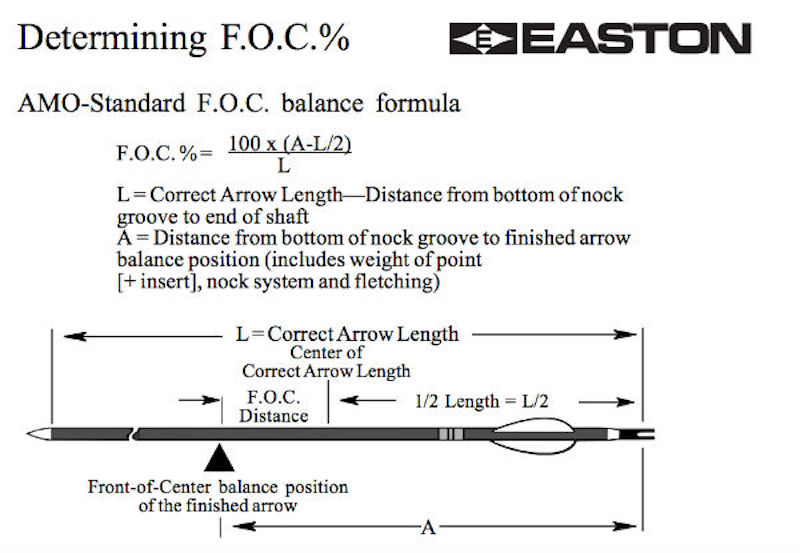 What's Your Arrow's Ideal Front-of-Center Weight?
What's Your Arrow's Ideal Front-of-Center Weight?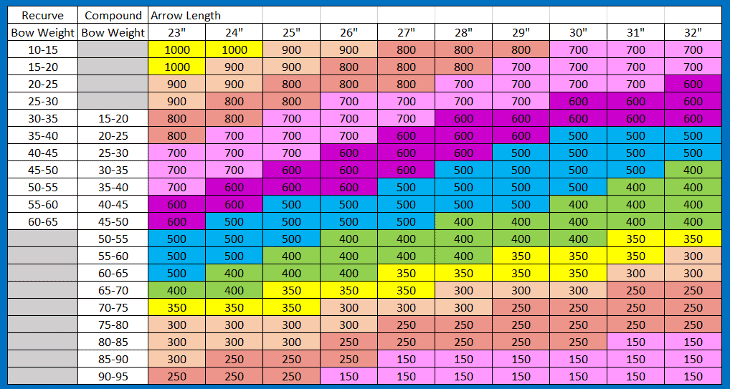 How to Choose Arrows: A Guide | The Complete Guide to Archery
How to Choose Arrows: A Guide | The Complete Guide to Archery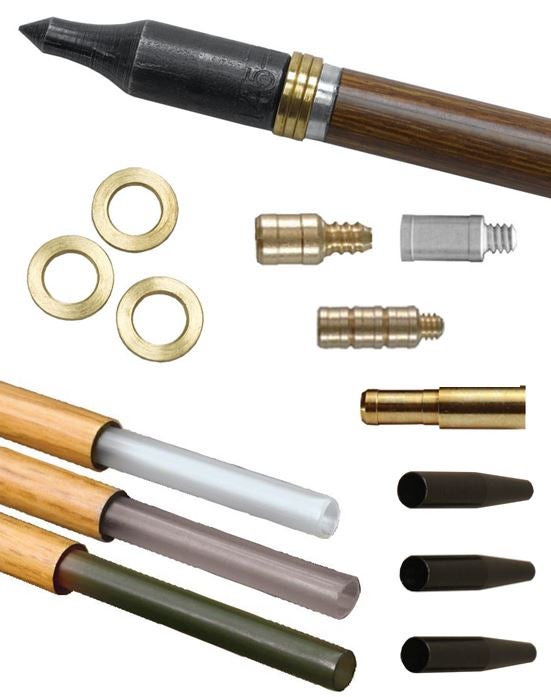 How to Use Arrow Weight Systems | Archer's Den – 3Rivers Archery Blog
How to Use Arrow Weight Systems | Archer's Den – 3Rivers Archery Blog Gold Tip - Spine Selector
Gold Tip - Spine Selector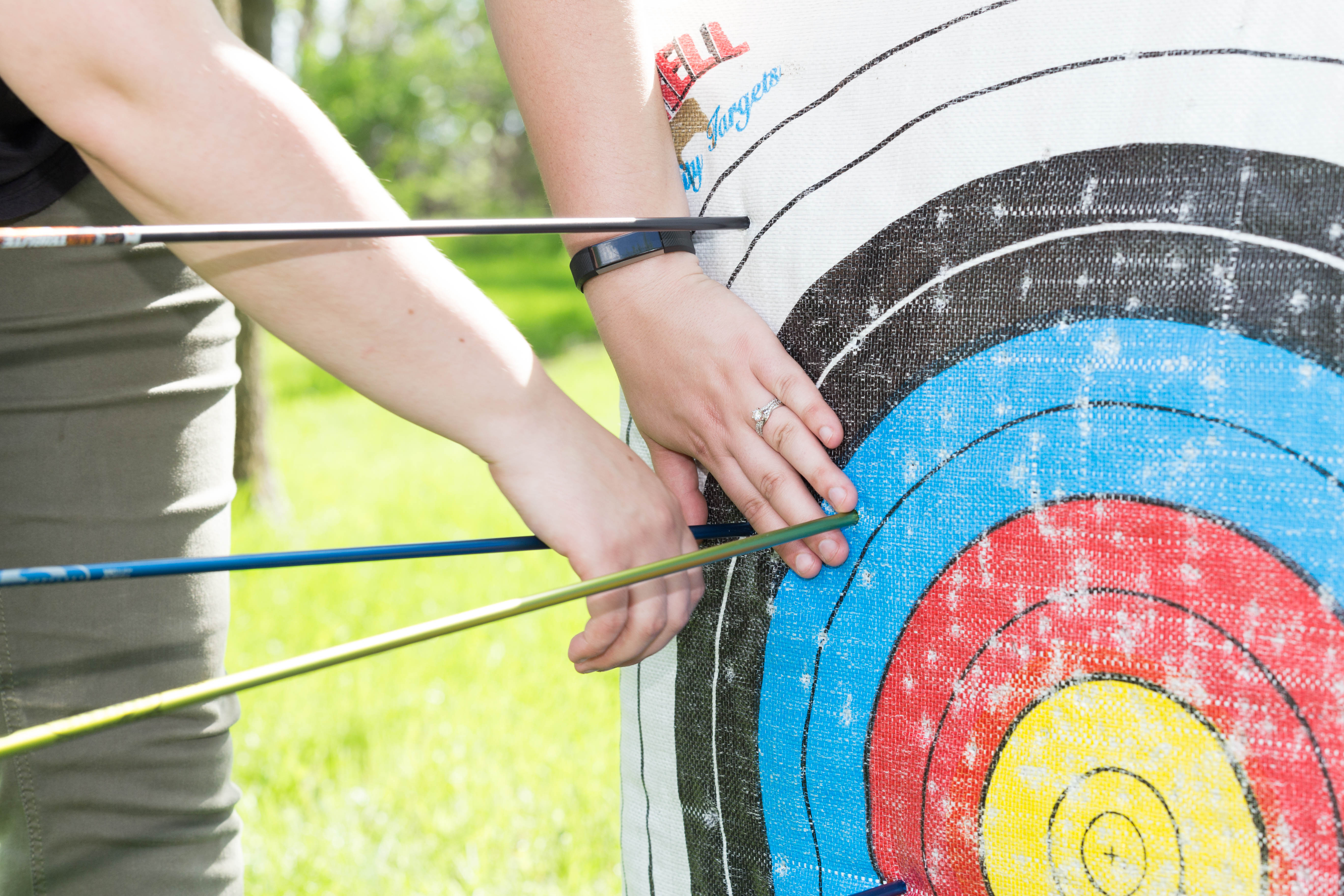 How to Calculate Arrow Weight and Why
How to Calculate Arrow Weight and Why Heavy arrow chart | Crossbow Nation Forum
Heavy arrow chart | Crossbow Nation Forum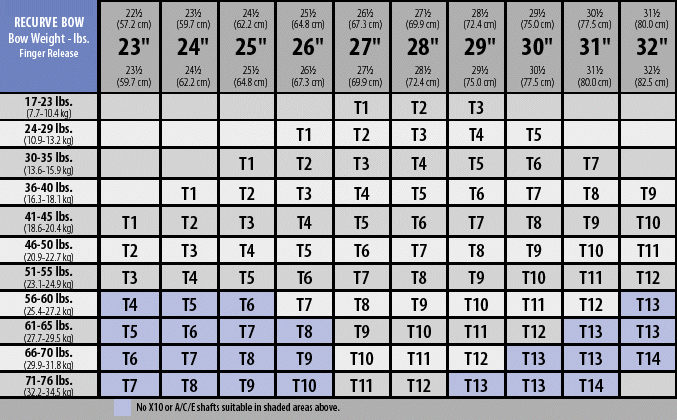 Archery, Arrows & Arrow Flight
Archery, Arrows & Arrow Flight Arrow Selection Guidelines
Arrow Selection Guidelines Gold Tip - Spine Selector
Gold Tip - Spine Selector Wood Arrow Spine Weight - Recurve, Longbow, & Compound bow Chart ...
Wood Arrow Spine Weight - Recurve, Longbow, & Compound bow Chart ...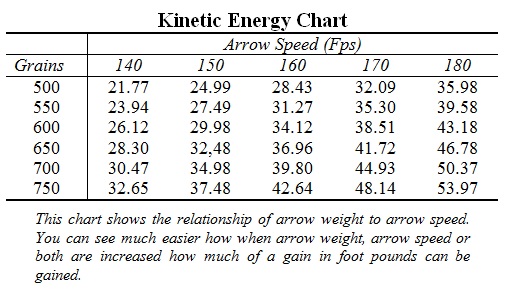 11 – Penetration | The Bowyer's Den
11 – Penetration | The Bowyer's Den adding front end weight to carbon arrow shafts
adding front end weight to carbon arrow shafts 10PK 25Grains Arrow Additional weight Copper bob weight with ...
10PK 25Grains Arrow Additional weight Copper bob weight with ... Consider More Than Speed When Buying a Crossbow
Consider More Than Speed When Buying a Crossbow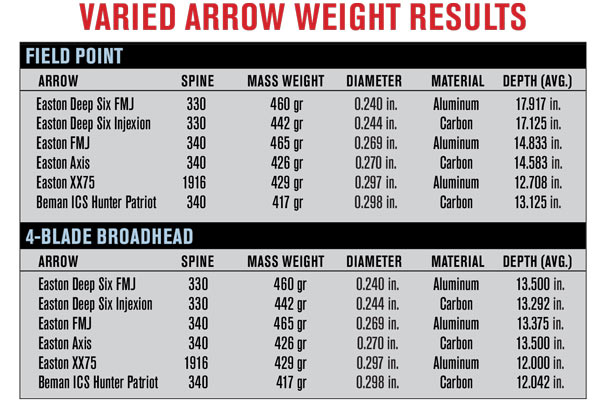 Do Small-Diameter Shafts Maximize Arrow Penetration?
Do Small-Diameter Shafts Maximize Arrow Penetration? How to: Select the perfect arrow | goHUNT
How to: Select the perfect arrow | goHUNT Weight and torque performance of fully powered (open arrows) and ...
Weight and torque performance of fully powered (open arrows) and ... Bow Efficiency and Why You Should Care
Bow Efficiency and Why You Should Care How to: Select the perfect arrow | goHUNT
How to: Select the perfect arrow | goHUNT WO2005038384A2 - Arrow system - Google Patents
WO2005038384A2 - Arrow system - Google Patents Elven Bow and Arrow - Archery Historian
Elven Bow and Arrow - Archery Historian Archery, Arrows & Arrow Flight
Archery, Arrows & Arrow Flight Weight (kg) and BC (1–5) throughout the assay. The arrow indicates ...
Weight (kg) and BC (1–5) throughout the assay. The arrow indicates ... Amazon.com : MILAEM 6pcs Archery Brass Arrow Weight 100/150/200 ...
Amazon.com : MILAEM 6pcs Archery Brass Arrow Weight 100/150/200 ... Safe Arrow
Safe Arrow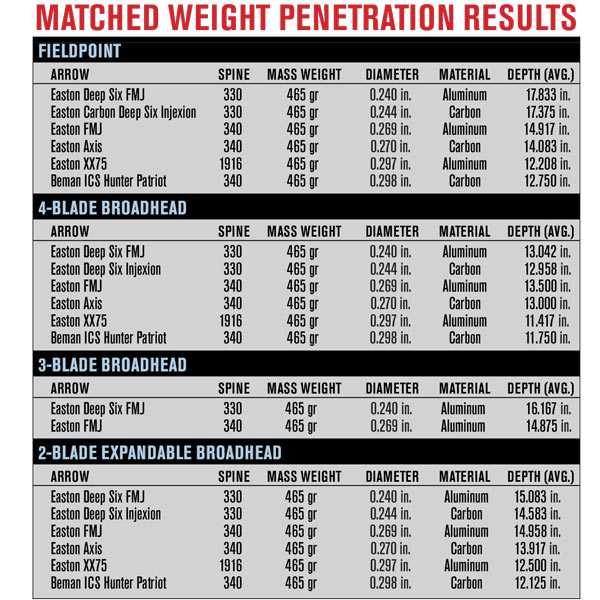 Do Small-Diameter Shafts Maximize Arrow Penetration?
Do Small-Diameter Shafts Maximize Arrow Penetration?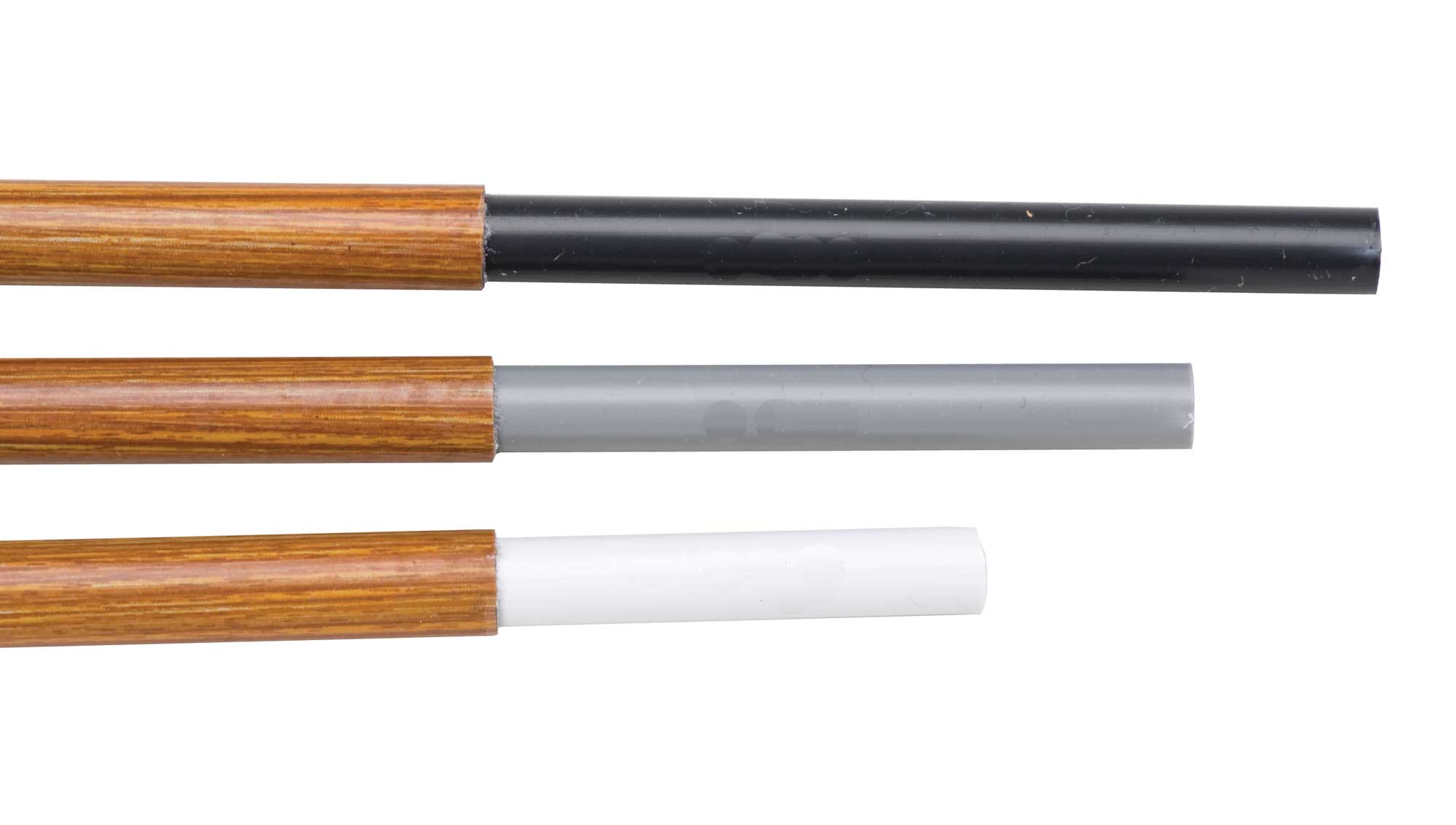 3Rivers Archery Arrow Weight Tubes
3Rivers Archery Arrow Weight Tubes Arrow Weight Setups - Rokslide
Arrow Weight Setups - Rokslide GrizzlyStik FOC & Arrow Weight Charts
GrizzlyStik FOC & Arrow Weight Charts 30 Pcs Archery Copper Arrow Insert Additional Weight Bob weight ...
30 Pcs Archery Copper Arrow Insert Additional Weight Bob weight ... Arrow Buying Guide | What You Need To Know – NOCK OUT Lighted Nocks
Arrow Buying Guide | What You Need To Know – NOCK OUT Lighted Nocks Turkish Flight Archery: Ottoman Turkish War arrow replicas
Turkish Flight Archery: Ottoman Turkish War arrow replicas Easton arrow tuning & maintenance guide, archery complete tuning ...
Easton arrow tuning & maintenance guide, archery complete tuning ... Bow Weight – Getting it right! | Bahamas Archery
Bow Weight – Getting it right! | Bahamas Archery Dynamic Spine Calculator Instructions 3-15-10 - Heilakka home page
Dynamic Spine Calculator Instructions 3-15-10 - Heilakka home page Arrow Weight: Heavy or Light? - YouTube
Arrow Weight: Heavy or Light? - YouTube Pengertian Berbagai Istilah, Peralatan, dan Perlengkapan dalam ...
Pengertian Berbagai Istilah, Peralatan, dan Perlengkapan dalam ... Archery, Arrows & Arrow Flight
Archery, Arrows & Arrow Flight Wood arrow spine for Bearpaw bows
Wood arrow spine for Bearpaw bows should i be worrying about arrow weight?
should i be worrying about arrow weight? Solved: change arrowhead size? - Adobe Support Community - 2120053
Solved: change arrowhead size? - Adobe Support Community - 2120053
Posting Komentar
Posting Komentar